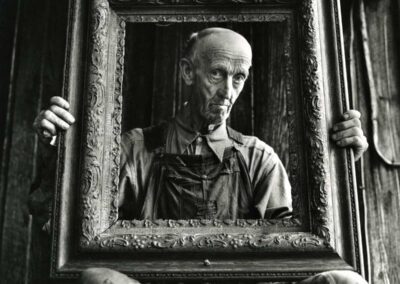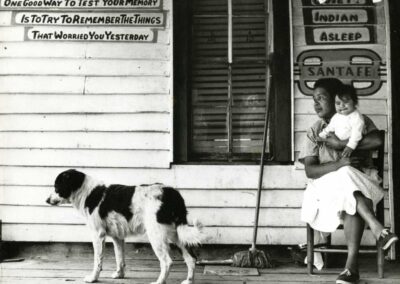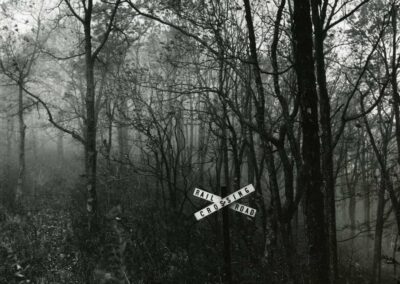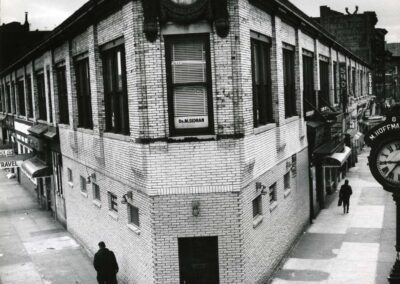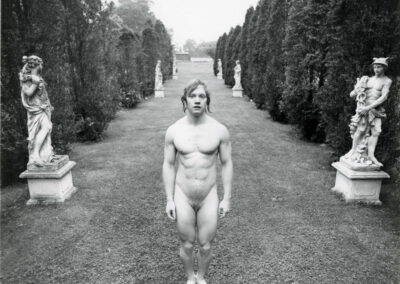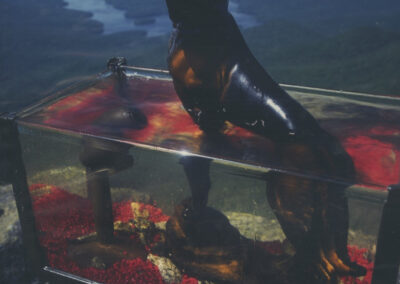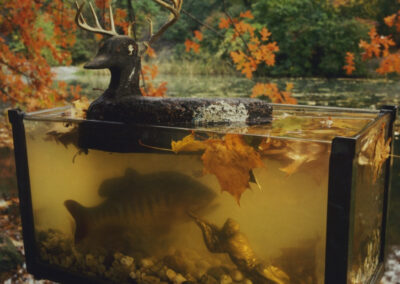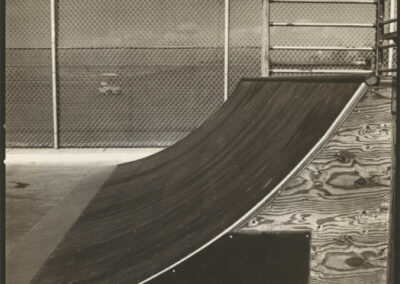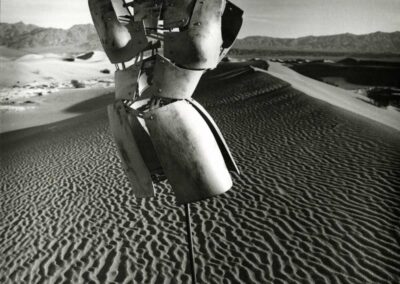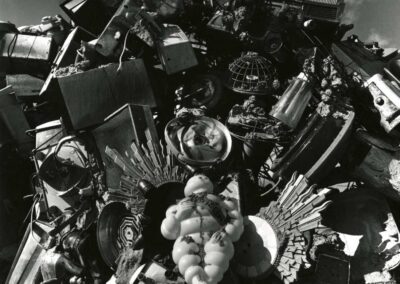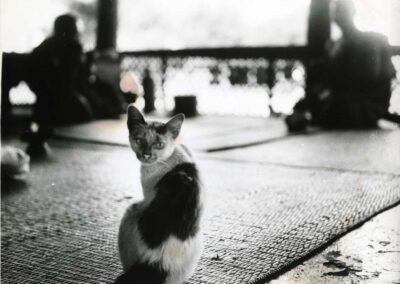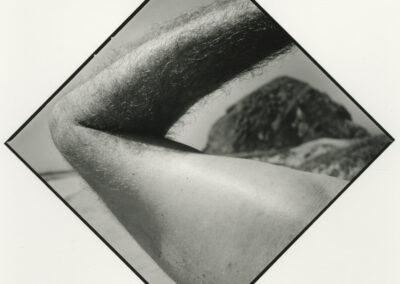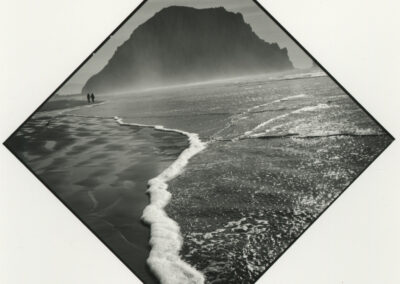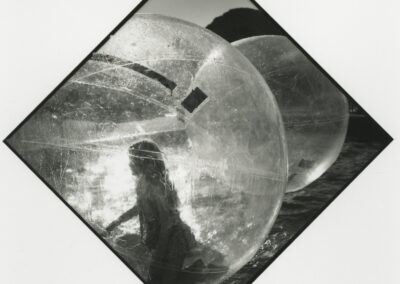Our latest Artist You Need To Know is Arthur Tress. A native of Brooklyn, New York, Tress’s first photographs were of Coney Island, where he captured the eerie and evocative landscapes of the ramshackle amusement parks and somewhat tawdry tourist traps. Tress attended Bard College in New York (BFA, 1962), and moved to Paris afterwards, for film school, which he didn’t complete.
He then shifted his practice completely, from a focus on the local, to travelling the world for five years (Africa and Asia, primarily), and developed an affinity for ethnographical photography. This was instrumental in his first commissioned photographic work, wherein he documented the folk cultures of Appalachia, back in the United States.
-
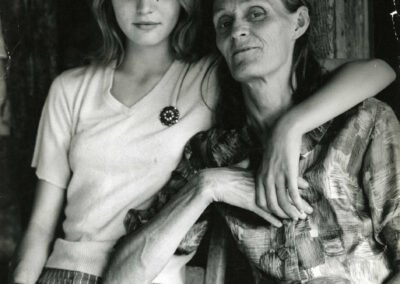
Appalachia, 1969
-

Appalachia, 1969
-

Appalachia, 1969
-

Appalachia, 1969
-

Open Space, 1967 - 68
-

Open Space, 1967 - 68
Tress’s photographs have been said to be informed by both a “staged surrealism” and an interest of how the human body can be a facility for stories, history and experience.
The experience of Appalachia – specifically “the destructive results of corporate resource extraction, Tress began to use his camera to raise environmental awareness about the economic and human costs of pollution. Focusing on New York City, he began to photograph the neglected fringes of the urban waterfront with a straight documentary approach. This gradually evolved into a more personal mode of “magic realism” combining improvised elements of actual life with stage fantasy that became his hallmark style of directorial fabrication. In the late 1960s Tress was inspired to do a series based upon children’s dreams that combined his interests in ritual ceremony, Jungian archetypes, and social allegory. Later bodies of work dealing with the hidden dramas of adult relationships and the reenactments of male homosexual desire evolved from this primarily theatrical approach.” (from here)
-

Theater of the Mind, 1976 - 1977
-

Theater of the Mind, 1976 - 1977
-

Theater of the Mind, 1976 - 1977
-

Fish Tank, 1989
-

Fish Tank, 1989
-

Fish Tank, 1989
Again, Tress shifted up his artistic practice, and in the 1980s, he started to explore colour photography, and staging installations that combined both painting and sculptural elements. He often incorporated found objects – specifically medical equipment he scavenged from an abandoned hospital on New York’s Welfare Island. This later evolved into smaller works, using a child’s toy theater and portable nineteenth-century aquarium.
-

Skate Park, 2003 - 2005
-

Skate Park, 2003 - 2005
-

Still Life, 1981 - 1983
-

Still Life, 1981 - 1983
-

Still Life, 1981 - 1983
-

Pistol Range, 2004
In the early 2000s, Tress decided to revisit more traditional gelatin silver and to focus upon more formal aesthetic compositions: mid twentieth century modernism and formalism – but contrasted with a more spontaneous shooting style – while also incorporating a “constructivist’s sense of architectural composition and abstract shape.” Tress’s subject matter, however, was still very much the world around him, and the spaces within which people live: California skateboard parks (Skate Park, 2003 – 2005), for example, where his photographs evoke a sensibility similar to Richard Serra’s sculpture, but Tress also captured the vivid graffiti and murals of those places. Other works in this period include the almost textural Planets (2003 – 2004) and the diamond shaped compositions of his series Morro Rock (2009 – 2015).
Tress’ images can be found in a number of collections, including Stanford Libraries Collection, Stanford University (California), San Francisco Museum of Modern Art, (United States), Whitney Museum of Art (New York), Smithsonian American Art Museum (Washington), The Getty Museum (Los Angeles, California), Fine Arts Museums of San Francisco (California), LACMA (Los Angeles, California), The Metropolitan Museum of Art (New York), MoMA (New York), The Museum of Fine Arts (Houston, Texas), Centre Pompidou (Paris), Museum of Contemporary Photography (Chicago) and George Eastman House Museum (New York).
He has produced a number of publications of his work, over his extensive career. A detailed list can be seen here, but these include Open Space in the Inner City: Ecology and the Urban Environment (1971), Shadow. A Novel in Photographs (1975), Theater of the Mind (with a text by Duane Michaels, 1976), Talisman (1986), Abbeville (1988), Male of the Species: Four Decades of Photography by Arthur Tress (1999), Fish Tank Sonata (2000), Arthur Tress: Fantastic Voyage: Photographs 1956-2000 (2001), Arthur Tress San Francisco 1964[9] (2012), Arthur Tress: Transréalités (2013) and The Circle of The Orange Rubber Traffic Cone (2019).
Many of the images from these series (and many other bodies of work) can be seen at this site.

